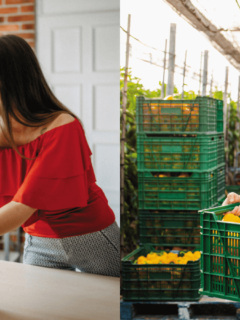As a sports goods retailer, are you struggling to find the best way to ship specific products, such as your bikes, rowing machines or skis?
Nothing could be more normal: these goods require very special attention, to ensure a good end-to-end experience for your customers.
Whether you run an e-commerce site or offer home delivery of your products from your point of sale, take a look at this short guide to choosing your packaging and service providers for the delivery of sporting goods.
Step 1: Choose the right packaging to deliver your sports goods
First of all, you need to find the right packaging to protect your goods. For sports goods deliveries, you have two options: a cardboard box or a wooden crate.
The cardboard box
Cardboard packaging is sturdier than you might think – if it’s well chosen for the size and weight of the sports equipment to be delivered.
When shipping sports equipment, it’s all about selecting the right cardboard flute for the weight of your item:
- Single flute is recommended for loads of up to 40 kg
- Reinforced double flute is recommended for loads of up to 70 kg
- Triple flute is recommended for heavy loads of up to 500 kg
Please note: if your product requires special protection (for example, if it has electronic components or particularly fragile parts), don’t hesitate to choose the higher flute.
Cardboard boxes come in a range of formats to match all the orders your customers place. For example, there are long cardboard boxes for delivering pairs of skis or snowboards.
To make the right choice, use the RAJA search engine to find the ideal box from among the 1,200 formats available from stock and deliverable in 24/48 hours.
The wooden crate
Do you need to deliver a particularly heavy sports item, or one that requires very special protection? Or are you shipping your goods internationally?
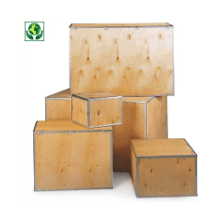
Then there’s no doubt about it: you need to pack your product in a wooden crate. Made from plywood, these crates are dedicated to the shipment of specifically heavy or fragile products, and are suitable for international shipments if you select them in compliance with the ISPM15 phytosanitary standard.
To find out more, read our article “The wooden crate: a key ally for your shipments”.
Whether you choose a cardboard or wooden crate, note that you should leave a few centimetres available between the sides of your container and your sports equipment, so that you can slip in some cushioning material.
Step 2: Select the appropriate cushioning method
If you’re going to ship any order of sports equipment, you’ll also need to choose a cushioning material that’s appropriate to the needs of your goods.
This is determined by the item’s need for protection. While some items will need anti-scratch cushioning, others will require cushioning that is particularly shock-absorbent.
Choose from the following materials:
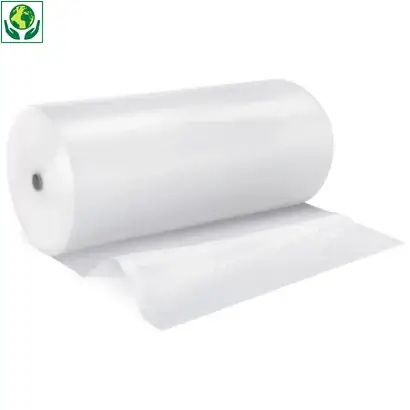 |
Bubble wrapBubble wrap is a traditional, flexible, lightweight cushioning material that wraps fragile, heavy products or products with sharp edges. Choose bubble wrap made from recycled materials to ensure it is ecologically responsible. |
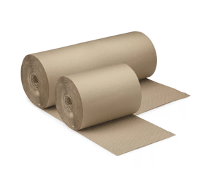 |
Bubble wrapThe eco-responsible version of bubble wrap, made from 100% recycled and recyclable paper, with the same protective properties for your shipments. |
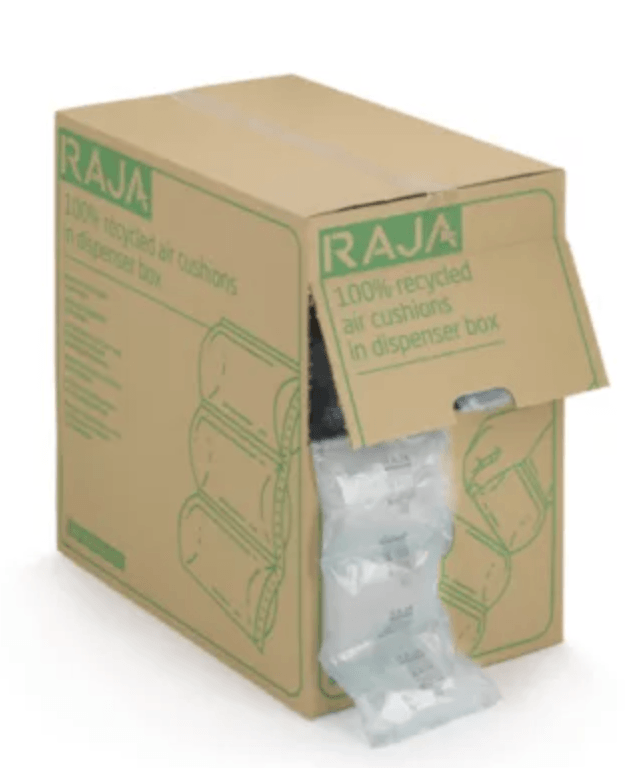 |
Air cushionsAir cushions are a shock-proof method of cushioning that enhances the value of your products and is ideal for cushioning goods in their containers. |
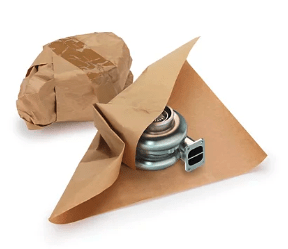 |
Kraft paperKraft paper is ideal for wrapping small parts of your products or for securing goods in the crate. Choose bio-sourced and recyclable paper for controlled eco-responsibility. |
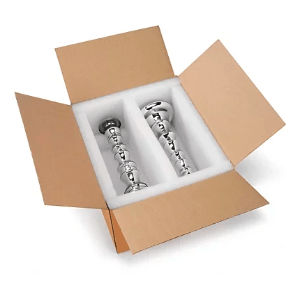 |
Polyethylene foam sheetsPolyethylene foam sheets are ideal for cushioning, padding and separating products in packaging. |
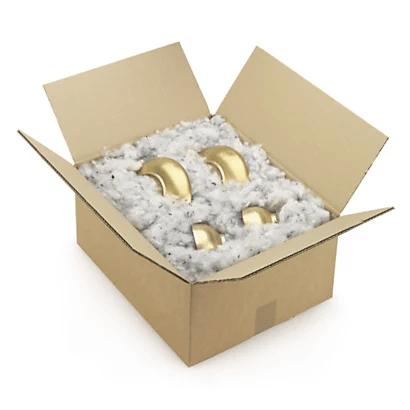 |
Recycled textile cushioning fibresmade from 100% recycled materials, is strong and safe, as it fills voids and absorbs shocks thanks to its shape memory properties. |
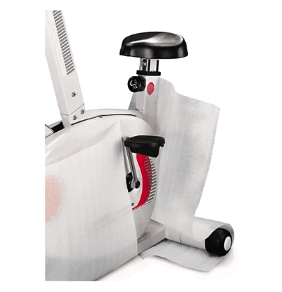 |
Polyethylene foam filmperfect for preventing scratches on fragile surfaces, and conforms to the shape of your sports products. |
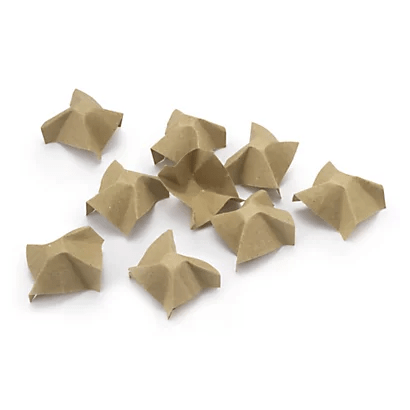 |
Particle cushioningThe particles interlock to perfectly cushion the products. It is also 100% recycled and recyclable. |
As well as wedging the products in the parcel, make sure you also wrap the corners and tips of the equipment (the most fragile parts) in flexible wedging (such as bubble wrap or kraft paper) to ensure they are not damaged during transport.
| Warning! Can your item be dismantled? We recommend that you dismantle it completely and wrap each part in appropriate cushioning material. For example, to ship a bicycle, dismantle the handlebars, pedals, wheels and other fragile parts so that each part is individually protected. |
Step 3: Choose the right bags for your smallest parts
At this stage, your order is not yet ready to be shipped: you need to know how to pack the smallest parts of your sports equipment, such as screws or nuts.
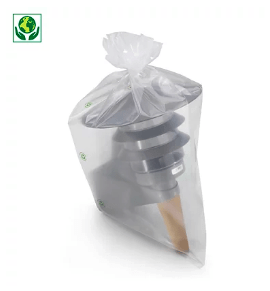
To do this, you need to choose plastic bags, transparent if possible, so that the parts are directly visible when you unpack the product.
You can choose these bags :
- Eco-responsible (made from recycled, recyclable and/or bio-sourced materials)
- With adhesive or zipfastener
- With gussets, if you need a larger capacity
Once your bag is full, make sure you tape it to the sports equipment itself.
To find out more about the ideal bag, visit our dedicated selection guide.
Step 4: Add transport labels for added security
To ensure that your sporting goods are shipped safely, take the time to add labels to the delivery packaging to tell the driver what precautions he needs to take to avoid damaging them.
In particular, remember to select :
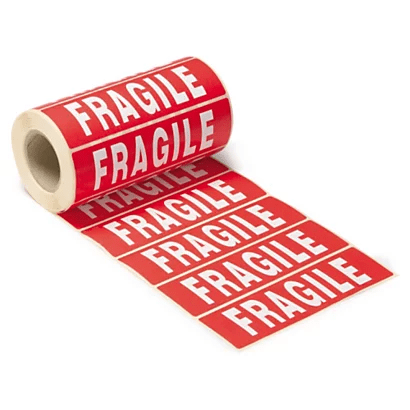 |
A “Fragile” label (or tape) for products most likely to break during shipping. |
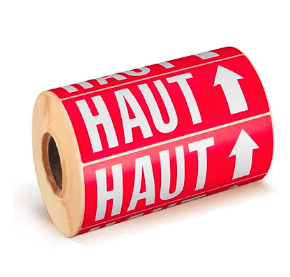 |
Labels with positioning indicatorsto help delivery personnel identify the top and bottom of the package during handling. |
Step 5: Select the right carrier to deliver your sporting goods
The final step in delivering your sporting goods is to choose the right transport provider for this type of shipment.
Not all delivery methods are suitable for sporting goods. For heavy or bulky items, you will need to choose a home delivery service specifically dedicated to this type of product. A simple delivery by La Poste will not suffice.
Your choice of carrier will depend on the size and weight of your item, as well as its specific handling requirements.
Make sure your carrier offers a reasonable delivery time, provides a parcel tracking number (for both you and the recipient), and allows flexible deliveries for your customer.
To have your bulky parcels (such as electric bikes, treadmills, etc.) delivered, turn to carriers such as :
- DHL
- GLS
- FedEx-TNT group
- Chronopost
- UPS
- Mondial Relay
- GLS
Need to entrust the delivery of your particularly heavy parcel (such as dumbbells) to a professional? Check the maximum weight accepted by carriers such as :
- TNT
- DHL Freight
- Sodexi
- UPS
Finally, for expensive sports equipment, you may want to consider taking out specific insurance, and requesting delivery against signature, which indicates that the goods have been delivered securely.
Pack it, protect it: you now have the ideal packaging and service provider to deliver your sports equipment safely and securely – guaranteed customer experience!















